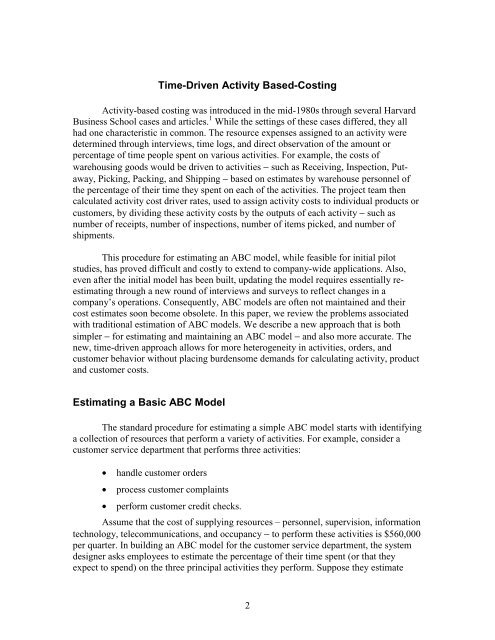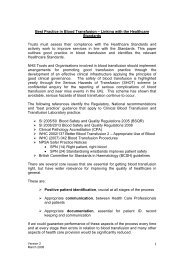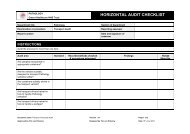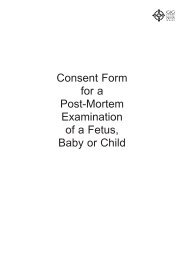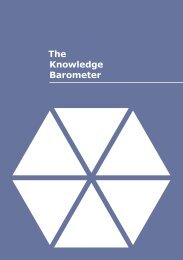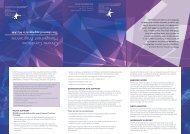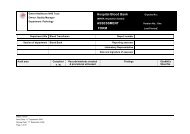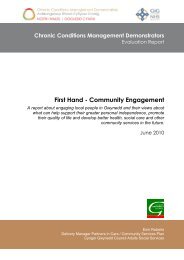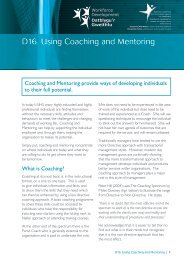Time-Driven Activity-Based Costing
Time-Driven Activity-Based Costing
Time-Driven Activity-Based Costing
You also want an ePaper? Increase the reach of your titles
YUMPU automatically turns print PDFs into web optimized ePapers that Google loves.
<strong>Time</strong>-<strong>Driven</strong> <strong>Activity</strong> <strong>Based</strong>-<strong>Costing</strong><strong>Activity</strong>-based costing was introduced in the mid-1980s through several HarvardBusiness School cases and articles. 1 While the settings of these cases differed, they allhad one characteristic in common. The resource expenses assigned to an activity weredetermined through interviews, time logs, and direct observation of the amount orpercentage of time people spent on various activities. For example, the costs ofwarehousing goods would be driven to activities − such as Receiving, Inspection, Putaway,Picking, Packing, and Shipping − based on estimates by warehouse personnel ofthe percentage of their time they spent on each of the activities. The project team thencalculated activity cost driver rates, used to assign activity costs to individual products orcustomers, by dividing these activity costs by the outputs of each activity − such asnumber of receipts, number of inspections, number of items picked, and number ofshipments.This procedure for estimating an ABC model, while feasible for initial pilotstudies, has proved difficult and costly to extend to company-wide applications. Also,even after the initial model has been built, updating the model requires essentially reestimatingthrough a new round of interviews and surveys to reflect changes in acompany’s operations. Consequently, ABC models are often not maintained and theircost estimates soon become obsolete. In this paper, we review the problems associatedwith traditional estimation of ABC models. We describe a new approach that is bothsimpler − for estimating and maintaining an ABC model − and also more accurate. Thenew, time-driven approach allows for more heterogeneity in activities, orders, andcustomer behavior without placing burdensome demands for calculating activity, productand customer costs.Estimating a Basic ABC ModelThe standard procedure for estimating a simple ABC model starts with identifyinga collection of resources that perform a variety of activities. For example, consider acustomer service department that performs three activities:• handle customer orders• process customer complaints• perform customer credit checks.Assume that the cost of supplying resources – personnel, supervision, informationtechnology, telecommunications, and occupancy − to perform these activities is $560,000per quarter. In building an ABC model for the customer service department, the systemdesigner asks employees to estimate the percentage of their time spent (or that theyexpect to spend) on the three principal activities they perform. Suppose they estimate2


